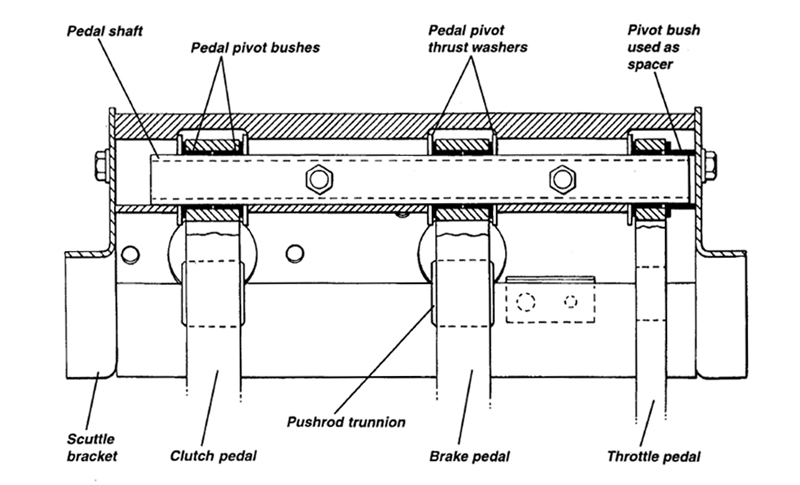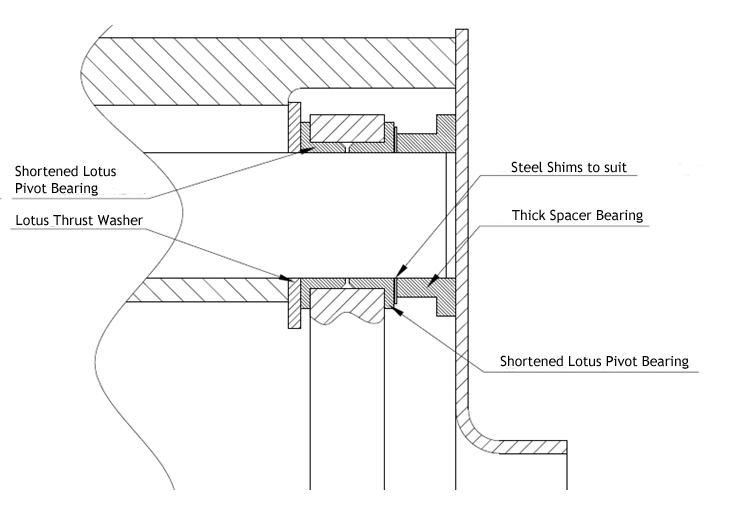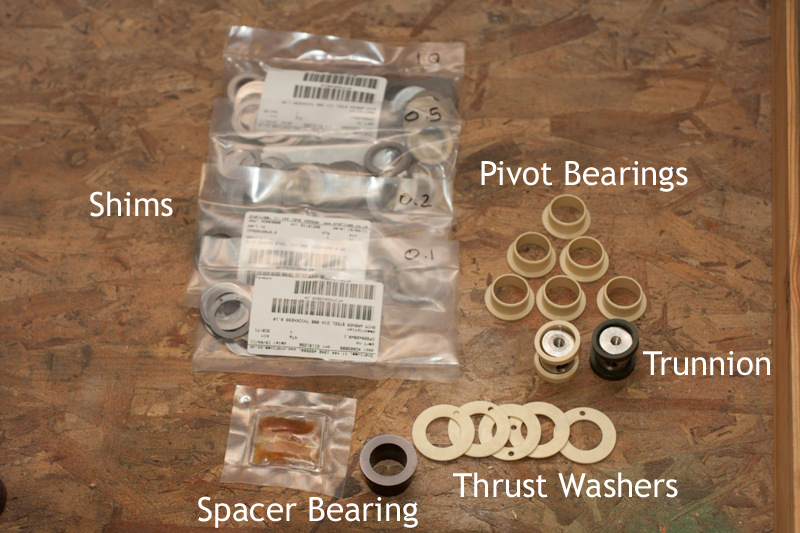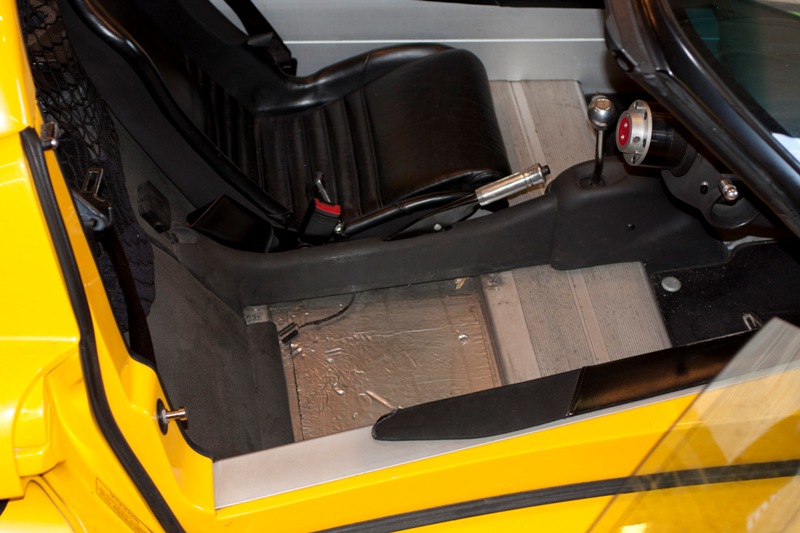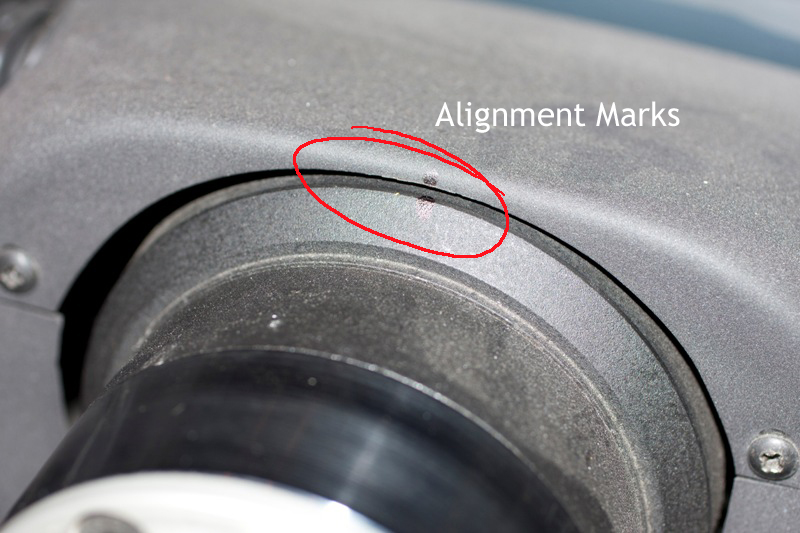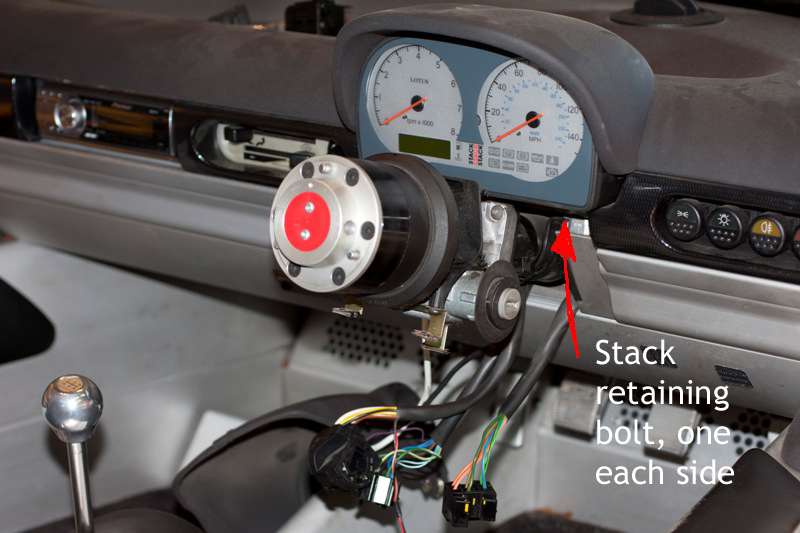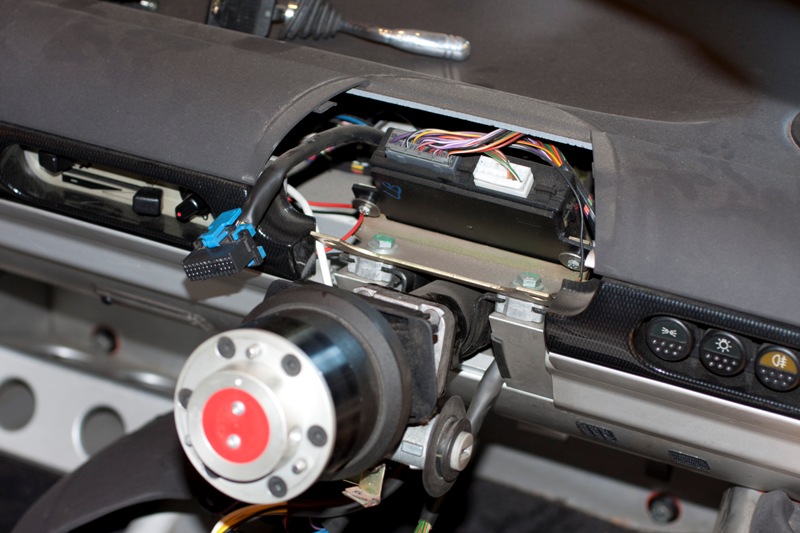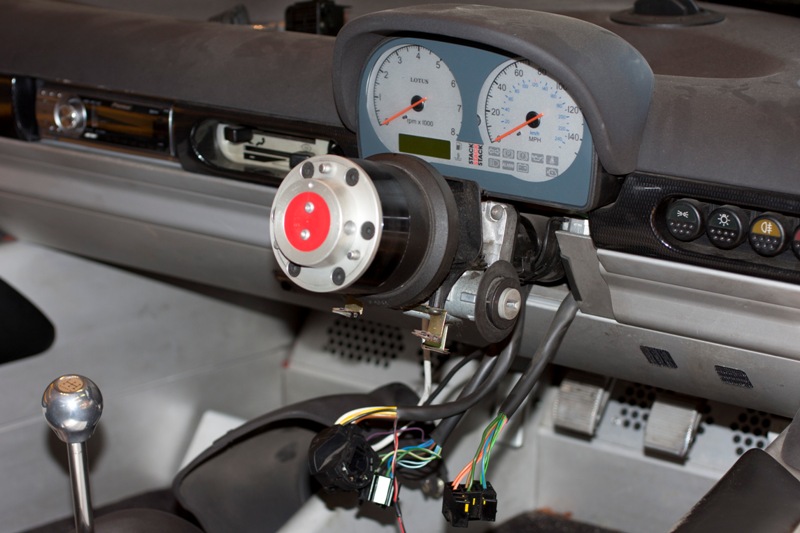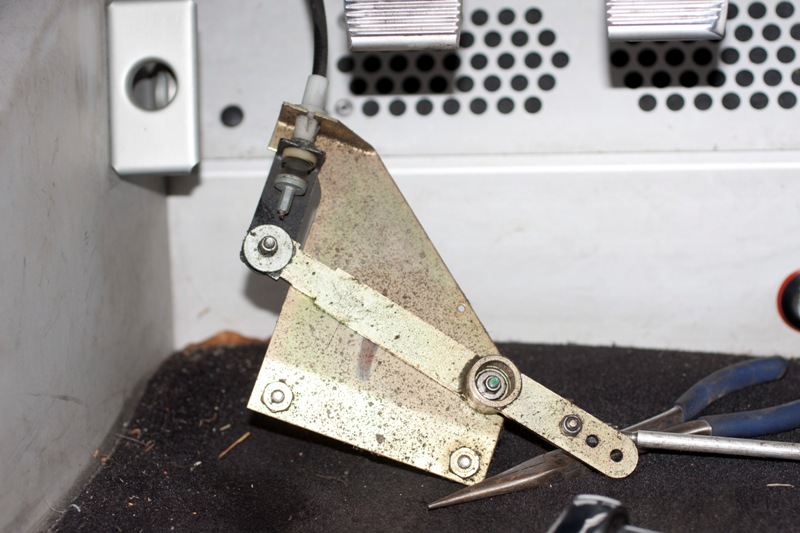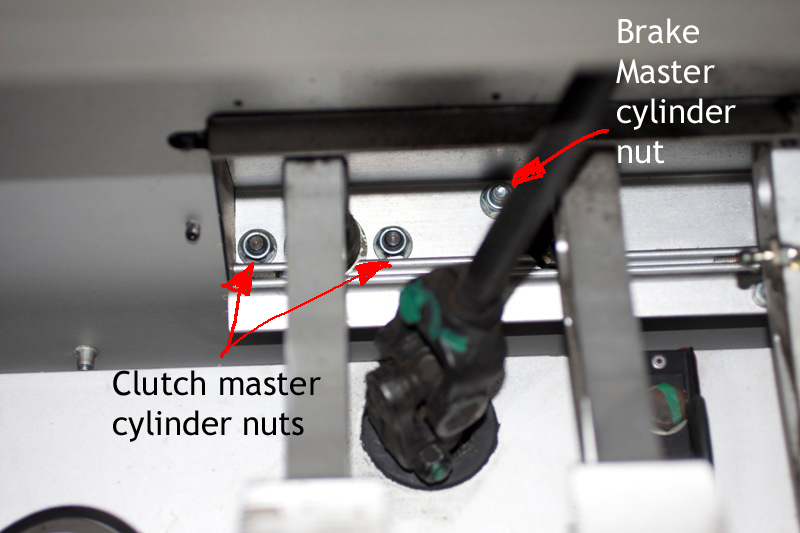Difference between revisions of "Pedal Box Refurbishment"
| Line 82: | Line 82: | ||
**I have a master battery cut-out switch, you will probably need to physically disconnect the positive terminal | **I have a master battery cut-out switch, you will probably need to physically disconnect the positive terminal | ||
**'''TAKE CARE TO RECONNECT TO THE CORRECT TERMINAL WHEN YOU PUT IT BACK TOGETHER OR YOUR ECU MAY TOAST ITSELF''' | **'''TAKE CARE TO RECONNECT TO THE CORRECT TERMINAL WHEN YOU PUT IT BACK TOGETHER OR YOUR ECU MAY TOAST ITSELF''' | ||
| + | |||
*Remove Driver’s seat | *Remove Driver’s seat | ||
**Four Allen bolts – front two easy with a cut down Allen key, rear two easy with an Allen key socket and multiple extension bars | **Four Allen bolts – front two easy with a cut down Allen key, rear two easy with an Allen key socket and multiple extension bars | ||
| Line 108: | Line 109: | ||
| − | *Optional) Remove Lucas 5AS unit | + | *'''(Optional)''' Remove Lucas 5AS unit |
**Two small bolts hold the 5AS unit onto the main steering column bracket. It is possible to remove the main mounting screws without taking this off but I was following the service manual. | **Two small bolts hold the 5AS unit onto the main steering column bracket. It is possible to remove the main mounting screws without taking this off but I was following the service manual. | ||
**Disconnect both connectors to the 5AS unit – again, both have latching barbs you’ll need to hold down to get them off | **Disconnect both connectors to the 5AS unit – again, both have latching barbs you’ll need to hold down to get them off | ||
| + | |||
*Disconnect Steering column switches (including ignition switch connector) | *Disconnect Steering column switches (including ignition switch connector) | ||
**Both the wiper switch and indicator switch will slide out of the column housing if you find the latches (top and bottom sides of the switches themselves. No need to disconnect the connectors from the switches if you do this, but if you do want to, they are held on with a couple of tabs which are quite obvious. | **Both the wiper switch and indicator switch will slide out of the column housing if you find the latches (top and bottom sides of the switches themselves. No need to disconnect the connectors from the switches if you do this, but if you do want to, they are held on with a couple of tabs which are quite obvious. | ||
| Line 136: | Line 138: | ||
[[Image:Pedal_Box_12_annotated.jpg|Steering Column Mounting bolts]] | [[Image:Pedal_Box_12_annotated.jpg|Steering Column Mounting bolts]] | ||
Once these are undone, assume the lotus position and undo and completely remove the pinch bolt on the steering column lower universal joint nearest the bulkhead. Use a large flat bladed screwdriver, or alternatively a crow bar to gently lever the forward face of the UJ away from the bulkhead. It will be tight. It will move eventually. | Once these are undone, assume the lotus position and undo and completely remove the pinch bolt on the steering column lower universal joint nearest the bulkhead. Use a large flat bladed screwdriver, or alternatively a crow bar to gently lever the forward face of the UJ away from the bulkhead. It will be tight. It will move eventually. | ||
| + | [[Image:Pedal_Box_08_annotated.jpg|Steering column UJ Pinch bolt]] | ||
| + | *Gently ease the entire column out through the dash into the cockpit. | ||
| + | **Do not put huge amounts of force axially through the steering column – the collapsible mechanism may collapse and then you’ll be spending time in a scrap yard looking for a mid-nineties vintage Vauxhall Corsa that doesn’t have a shagged steering column. | ||
| + | **While it’s out, do up the UJ pinch bolts at torque setting #2 (effing tight). It’s much easier off the car and if any of them are not tight, it’ll result in steering play. | ||
| − | [[Image: | + | *Unbolt and ease out of the way both Clutch Master Cylinder and Brake Master cylinder |
| + | **The Clutch master cylinder is undone from inside the cockpit – undo the two nuts either side of it whilst upside down in the foot well | ||
| + | **The brake master Cylinder also has two bolts – they are arranged diagonally and the lower one is simple – undo it from the front service compartment – it’s in a captive nut. The upper one requires you to put a ring spanner on the front service compartment bolt head, and undo the nut from the cockpit – having someone around to hold the spanner on is a great help here. | ||
| + | |||
| + | [[Image:Pedal_Box_08a_annotated.jpg|Master Cylinder Bolt locations]] | ||
Revision as of 12:42, 22 June 2011
SELOC how-to: Elise S1 Pedal Box Refurbishment
Firstly, Don’t. Just Don’t. Take your car and a big bundle of cash to your favourite spanner men and let them do it. Trust me on this. You REALLY don’t want to do this job. Not in a million years.
Anyone past the first paragraph will fall into one of two categories:
1. Terminally tight as a gnat’s chuff, or
2. The sort of person who has whips, nipple clamps and gimp suits in the cellar
Either way, I take my hat off to you - you are about to spend between 12 and 18 hours contorted into various unlikely positions and swearing profusely at your little plastic sports car, or “Yellow Piece of Shit”, as mine is now known.
First, you’ll need the bits. The official Lotus parts are these:
This list of parts will enable you to put the pedal box back to factory fresh condition, assuming that your brake trunnion is in good condition (these appear to be good for well over 100k miles, based on anecdotal evidence). If you need the brake trunnion, it’s part number A111J0039F.
I decided that the original arrangement, particularly on the throttle pedal, could do with improvement, so designed an alternative that hopefully will last longer and does immediately improve pedal feel.
The problem with the original Lotus Pedal Arrangement
In the above diagram, you can see that Lotus used two standard pivot bearings and a single thrust washer to locate the throttle pedal. I see three issues with this:
1.Support for the right-hand face of the pedal is wholly dependent on the fit of the pivot bearing being used as a spacer
2.The pivot bearings are a running fit on the shaft, and the frictional forces involved means that the bearing will rotate with the pedal when it’s moved
3.The net bearing area where the “spacer” bush meets the scuttle bracket is tiny – these bearings are pretty thin – so the wear rate at that end of the bearing is likely to be large.
With a high wear rate, and the feel of the pedal determined by that fit, I felt that a different arrangement was called for to future proof my pedal box. After all, I never intend to do this job again :)
My solution to the problem
In essence, I shortened both bearings that would normally be used so that they would fit the pedal as per the other pedals, then found a suitable larger bush to fit and use as a spacer. Because I would be manually modifying these parts, I needed some method to get a good close running fit, so found some suitable shim washers in varying thicknesses to take up the slack. I ended up using the same shim washers to take out most of the axial play in the other pedals too.
Net result is that both shoulders of the throttle pedal are properly supported, and there is a much larger bearing area on the pedal/spacer interface. Should last much longer!
The parts list I ended up using is below:
I managed to get the thrust washers from igus who very usefully have a free sample ordering option. I chanced my arm and asked for 5 as free samples. You have to put in some info and rationale – I said that I am designing a modular lightweight automotive pedal box system (not a million miles from the truth) and they showed up the next day! For those of you with a higher sense of ethics than me, they can be bought from the same source and will cost you a total of £18.35 for 5, which is still cheaper than Lotus. As far as I can tell, they are exactly the same part. In fact, the pivot bearings seem to be exactly the same as igus part number JFM-2023-11. These are cheaper from Lotus though.
The thick spacer bearing and shim washers came from ondrives. These parts took a little longer to arrive, around two weeks. Plan accordingly if you’re not blagging shims from me :)
In fairness, I did also buy two additional bags of shims – 0.5mm and 1mm thick because I had no idea how much clearance I’d need to take up. I didn’t use any of them so you’ll most likely only need the 0.1mm and 0.2mm shims.
Of course, I now have a bag of 94 0.1mm shims and a bag of 98 0.2mm shims, so if anyone is interested I can send you a few - just u2u me :)
How to spend 18 hours of your life swearing at your car
So – here’s the interesting bit. First, check that you have all the bits you’ll need:
(Or use the Lotus parts, which will look identical except for the spacer bush and shims. I only used the trunnion with the pale bushes in the end because I decided against using a compressible bush trunnion in the brake pedal)
I found this to be the best order of working….
Getting the bloody thing out
- Disconnect battery
- I have a master battery cut-out switch, you will probably need to physically disconnect the positive terminal
- TAKE CARE TO RECONNECT TO THE CORRECT TERMINAL WHEN YOU PUT IT BACK TOGETHER OR YOUR ECU MAY TOAST ITSELF
- Remove Driver’s seat
- Four Allen bolts – front two easy with a cut down Allen key, rear two easy with an Allen key socket and multiple extension bars
- Remove Steering column shroud
- Mark the steering column shroud and wheel at top dead centre - you’ll need to align things back again on reassembly so that your steering wheel isn’t at a crazy angle
- Undo 4 x small self-tappers holding upper shroud to lower shroud
- Undo 3 x large self tappers holding lower shroud to column (underneath lower shroud)
- Remove trip meter reset/dash light dimming button
- Put lower shroud on the dashboard – the touch key cable is just long enough
- Remove Stack
- Undo two bolts visible to either side of the steering column holding the stack onto the main steering column mount
- Disconnect the single stack connector – there is a latch that you need to hold down and it’s quite stiff
- (Optional) Remove Lucas 5AS unit
- Two small bolts hold the 5AS unit onto the main steering column bracket. It is possible to remove the main mounting screws without taking this off but I was following the service manual.
- Disconnect both connectors to the 5AS unit – again, both have latching barbs you’ll need to hold down to get them off
- Disconnect Steering column switches (including ignition switch connector)
- Both the wiper switch and indicator switch will slide out of the column housing if you find the latches (top and bottom sides of the switches themselves. No need to disconnect the connectors from the switches if you do this, but if you do want to, they are held on with a couple of tabs which are quite obvious.
- Ignition switch wiring connector can be disconnected by inserting a small screwdriver into the recess between the white and yellow wires. You’ll need to remove the cover from the connector, again held on with barbed tabs.
- You are trying to push the white plastic bit you can just about see towards the centre of the assembly. If you put your screwdriver in too far, you’ll also end up pushing the bit that it’s caught on in with it.
- If you pull too hard, the entire thing will fall apart and you’ll be stuck trying to figure out how to put it back together again. If you’re lucky, only one of the three lugs holding the back of the ignition switch in will have broken and you’ll be able to reassemble, then super glue it back together again (having testing that it works before gluing, of course). Yes, I wasted 2 hours doing this and would not recommend it.
- There are three components that will ping out and land somewhere in the car. One is a small piece of nylon with a spring in one end. This keeps the internal part of the switch centred on the ignition lock shaft and also prevents the lock being rotated too far.
- The other two are small “Y” shaped metal pieces that act as the contacts. One is longer that the other. The longer one goes in the lower locating position on the central switch mechanism. Actually, the ignition switch is quite ingenious because the contacts are raised and lowered to meet with the pins as the switch is rotated. I wouldn’t recommend busting it though, if it pings off again after gluing, you’re screwed because all power to the ignition system routes through the switch. I’ll probably be buying a replacement at some point for peace of mind.
- Disconnect throttle pushrod from pedal
- Pop off the plastic ball joint from the tit on the pedal. If you’re lucky, the rivet holding the tit onto the pedal won’t give way. If it does, use a small nut and bolt to put it back on afterwards.
- Remove throttle linkage plate
- Undo the two small bolts holding the plate to the underside of the dash panel, then swing the entire linkage assembly into the passenger foot well
- Remove the throttle stop bolt from immediately behind the throttle pedal at this stage
- Remove Steering column
- Move your steering wheel so that the mark you made earlier is top dead centre
- You’ll need to undo three bolts from the cockpit. Two large bolts either side of the column immediately below where the stack was, one slightly shorter bolt in the bowels of the dash, on the bulkhead. Follow the column into the dash recess and it’ll be just above it, buried behind a nest of wiring.
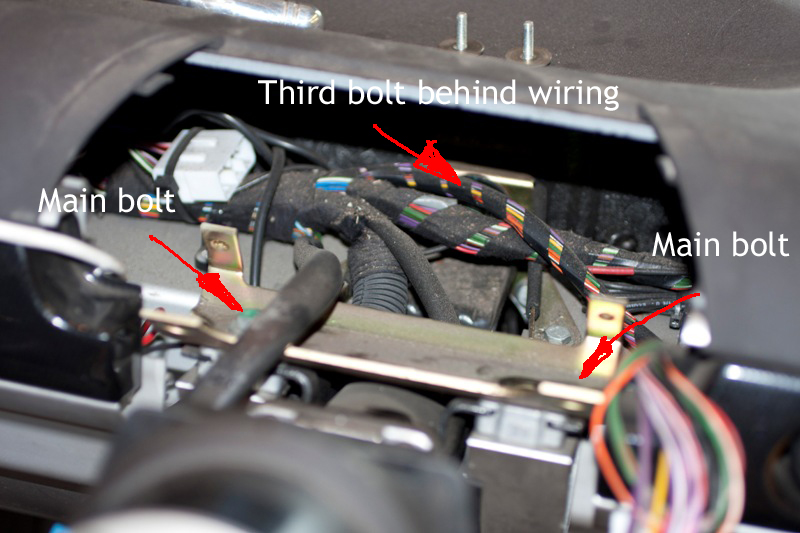 Once these are undone, assume the lotus position and undo and completely remove the pinch bolt on the steering column lower universal joint nearest the bulkhead. Use a large flat bladed screwdriver, or alternatively a crow bar to gently lever the forward face of the UJ away from the bulkhead. It will be tight. It will move eventually.
Once these are undone, assume the lotus position and undo and completely remove the pinch bolt on the steering column lower universal joint nearest the bulkhead. Use a large flat bladed screwdriver, or alternatively a crow bar to gently lever the forward face of the UJ away from the bulkhead. It will be tight. It will move eventually.
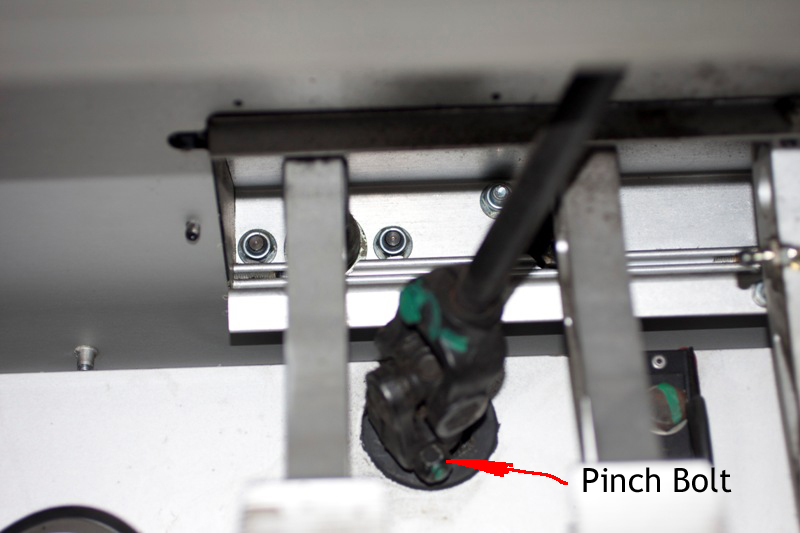
- Gently ease the entire column out through the dash into the cockpit.
- Do not put huge amounts of force axially through the steering column – the collapsible mechanism may collapse and then you’ll be spending time in a scrap yard looking for a mid-nineties vintage Vauxhall Corsa that doesn’t have a shagged steering column.
- While it’s out, do up the UJ pinch bolts at torque setting #2 (effing tight). It’s much easier off the car and if any of them are not tight, it’ll result in steering play.
- Unbolt and ease out of the way both Clutch Master Cylinder and Brake Master cylinder
- The Clutch master cylinder is undone from inside the cockpit – undo the two nuts either side of it whilst upside down in the foot well
- The brake master Cylinder also has two bolts – they are arranged diagonally and the lower one is simple – undo it from the front service compartment – it’s in a captive nut. The upper one requires you to put a ring spanner on the front service compartment bolt head, and undo the nut from the cockpit – having someone around to hold the spanner on is a great help here.

